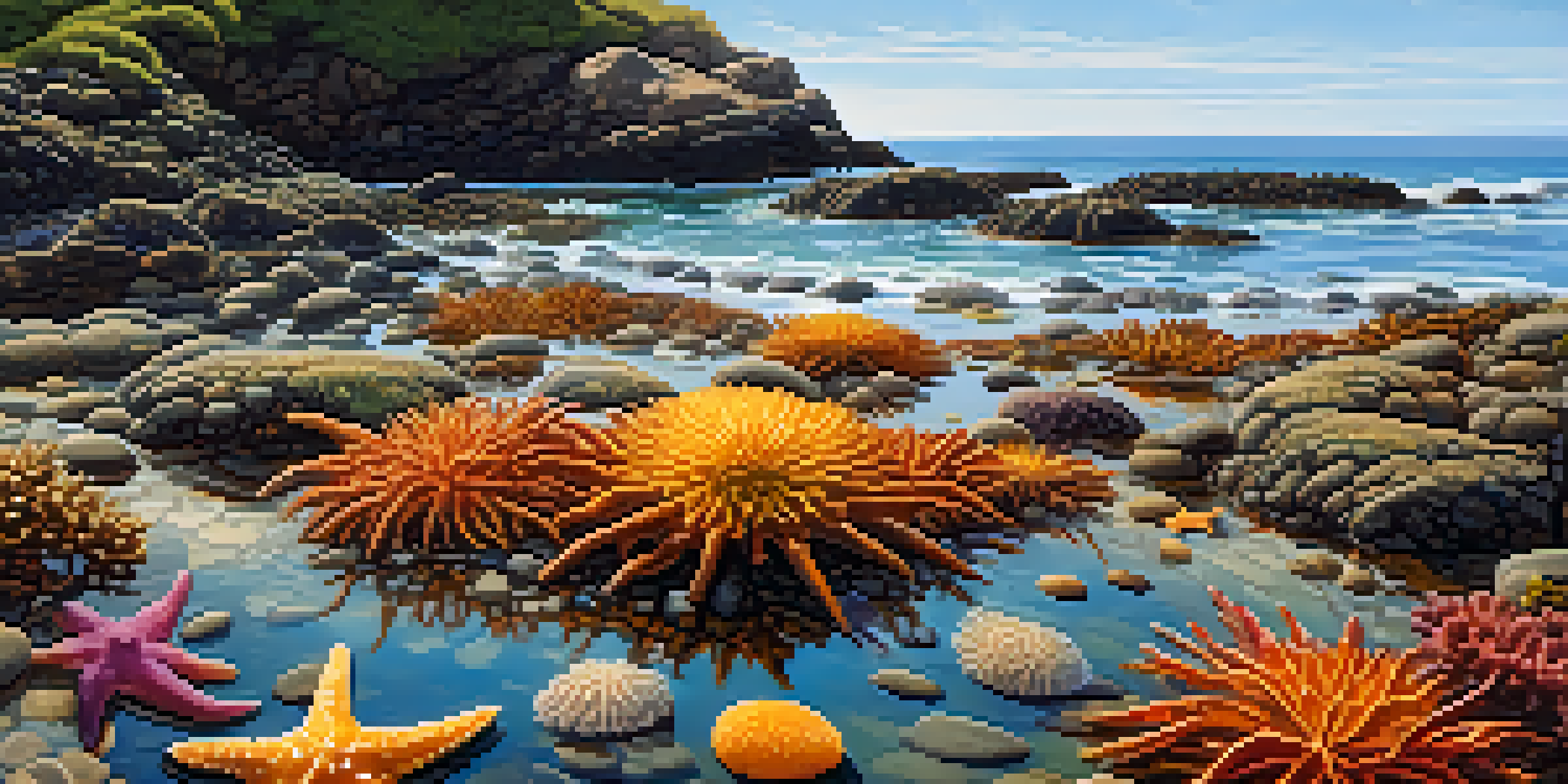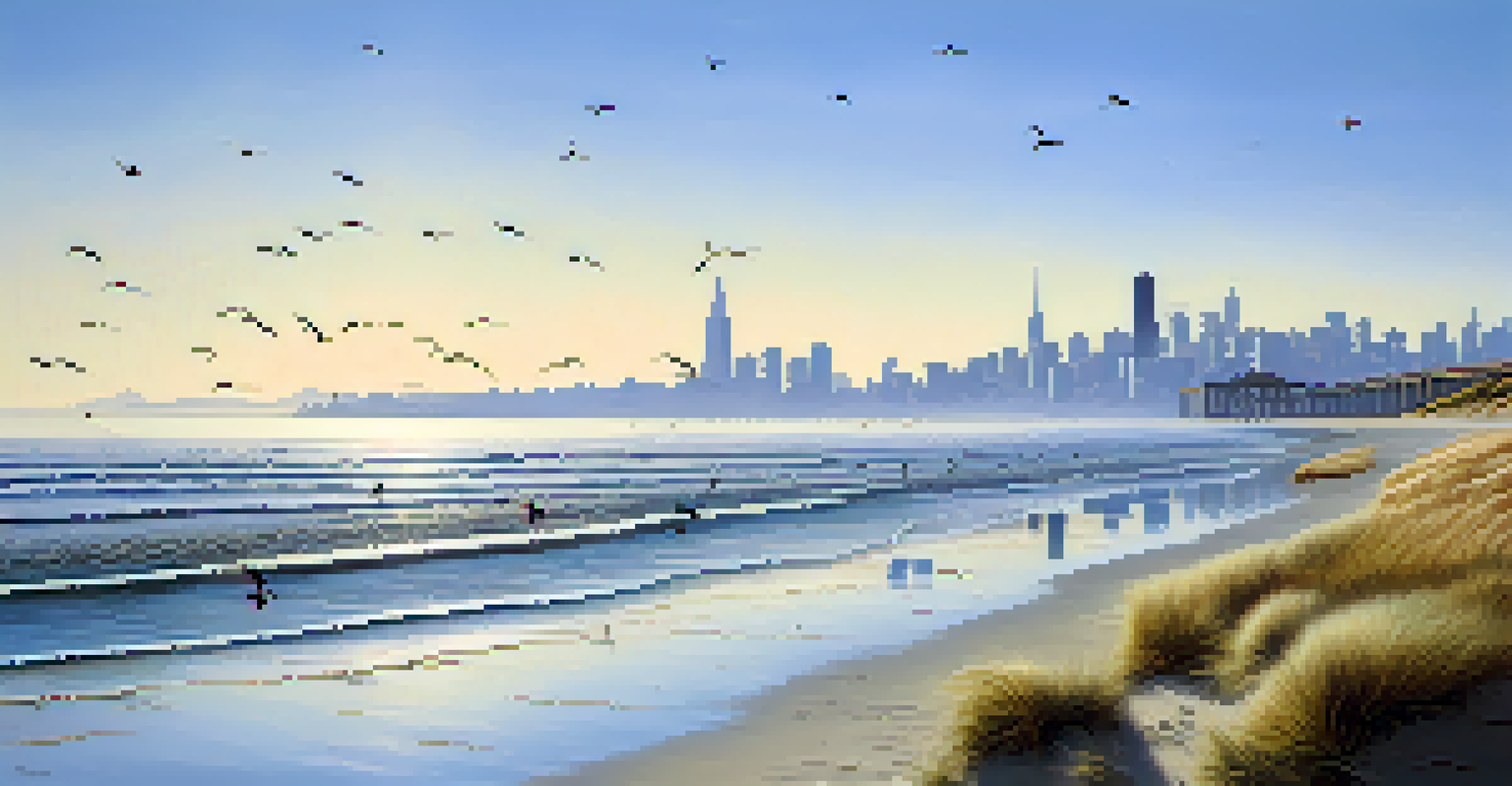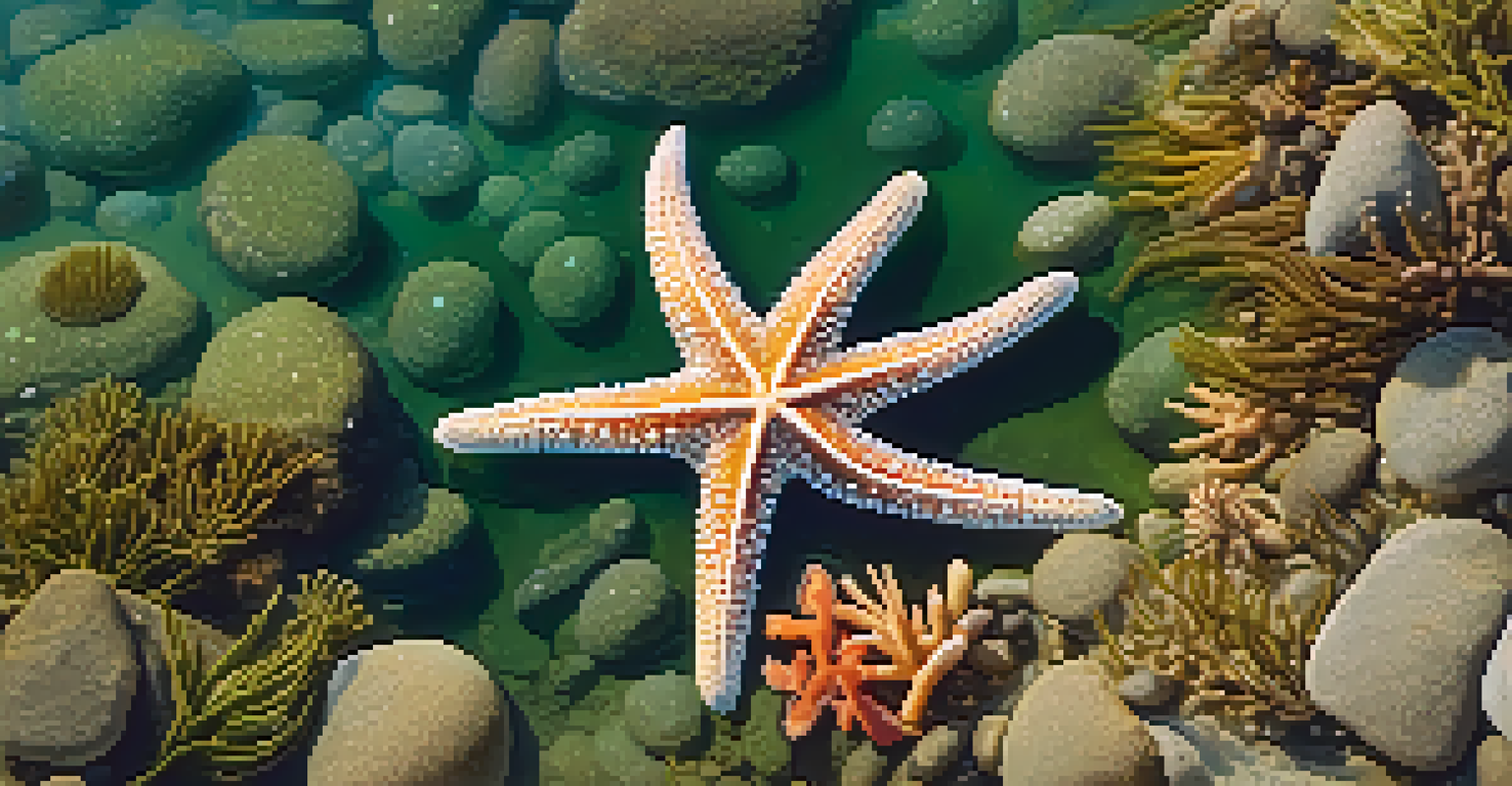Exploring the Intertidal Zones of San Francisco's Shoreline

Understanding Intertidal Zones and Their Importance
Intertidal zones are the areas of the shoreline that are exposed to air at low tide and submerged at high tide. These fascinating ecosystems serve as a bridge between land and sea, hosting a unique blend of marine and terrestrial life. They play a vital role in the health of coastal environments by filtering pollutants and providing habitats for various species.
The coast is an incredibly dynamic place, and it is important to preserve the intertidal zones that provide a habitat for so many species.
These zones are crucial for biodiversity, serving as nurseries for many fish and crustaceans. In addition to their ecological importance, intertidal zones offer recreational opportunities and educational experiences for locals and visitors alike. Understanding these areas helps us appreciate the intricate balance of nature and the need for conservation.
As we dive deeper into the intertidal zones of San Francisco, we will explore their diverse habitats, unique species, and the environmental challenges they face. Each visit to these areas can unveil a new experience, making them essential for both enjoyment and education.
The Unique Habitats of San Francisco's Shoreline
San Francisco's intertidal zones boast a variety of habitats, including rocky shores, sandy beaches, and tidal flats. Each habitat supports different communities of organisms, creating a rich tapestry of life. For example, rocky shores are home to resilient species like barnacles and sea anemones, while sandy beaches provide a habitat for shorebirds and crabs.

Tidal pools, those small pockets of water left behind after the tide recedes, are particularly fascinating. They are miniature ecosystems where you can find starfish, sea urchins, and even tiny fish. Exploring these pools can feel like stepping into another world, where every crevice holds a new surprise.
Intertidal Zones Are Biodiversity Hotspots
These ecosystems serve as crucial nurseries and habitats for diverse marine life, emphasizing the need for their conservation.
Understanding these habitats is essential for appreciating the intertidal zones' biodiversity. Each area offers a unique glimpse into the complexities of marine life and highlights the importance of protecting these delicate ecosystems.
Key Species Found in the Intertidal Zones
The intertidal zones of San Francisco are teeming with life, featuring a range of species adapted to the harsh conditions of changing tides. Some of the most recognizable inhabitants include sea stars, sea urchins, and various types of seaweed. Each of these species plays a crucial role in their ecosystem, creating a balance that supports the overall health of the intertidal zone.
In every drop of water, there is a story of life.
For instance, sea stars are not just beautiful; they are also important predators that help control the population of barnacles and mussels. Similarly, kelp forests provide shelter and food for countless marine organisms, making them vital to the ecological balance. Observing these species in their natural habitat can deepen our understanding of marine biology and ecology.
Spotting unique creatures like the colorful nudibranch or the elusive octopus can make any trip to the shoreline an unforgettable adventure. These species exemplify the diversity and complexity of life in the intertidal zones, reminding us of nature's wonders.
The Role of Tides in Shaping Coastal Ecosystems
Tides play a fundamental role in shaping the intertidal zones, influencing which species can thrive in specific areas. The rhythmic rise and fall of the ocean not only impact the physical environment but also dictate the availability of food and habitat for many organisms. Understanding these tidal patterns is essential for anyone exploring these dynamic ecosystems.
During low tide, new areas are exposed, allowing access to a wealth of marine life that is usually hidden underwater. Conversely, high tide brings water back over these zones, providing nourishment and protection for the organisms that live there. This constant cycle creates a unique environment, rich in diversity and life.
Tides Shape Coastal Ecosystems
The rhythmic rise and fall of tides influence species distribution and food availability, making timing essential for exploration.
For those interested in observing intertidal creatures, timing is everything. Planning visits around low tide can offer the best opportunities for exploration and discovery, making it easier to witness the unique interactions between species and their environment.
Challenges Facing Intertidal Zones
Despite their beauty and ecological significance, intertidal zones are facing numerous challenges. Climate change, pollution, and human activity threaten the delicate balance of these ecosystems. Rising sea levels and increased storm intensity can erode shorelines, while pollution can introduce harmful substances that disrupt marine life.
Additionally, recreational activities like fishing, boating, and beachcombing can disturb these habitats. Overharvesting of species, particularly shellfish, can lead to population declines and affect the overall health of the ecosystem. Understanding these threats is crucial for fostering a sense of responsibility in protecting these environments.
Community awareness and conservation efforts can make a significant difference in preserving intertidal zones. Engaging with local organizations and participating in clean-up activities can help ensure that these unique ecosystems remain vibrant for future generations.
Exploring San Francisco's Intertidal Zones: Where to Go
One of the best places to explore the intertidal zones in San Francisco is at the Golden Gate National Recreation Area. Locations like Baker Beach and Lands End offer stunning views and accessible tide pools where visitors can observe marine life in action. The diverse habitats within these areas provide an excellent opportunity to experience the beauty of the coastline firsthand.
Another great spot is the Point Reyes National Seashore, which features extensive tide pools and rocky shores. The variety of habitats found here supports a wide range of species, making it a haven for nature enthusiasts and families alike. Remember to check tide charts before your visit to make the most of your exploration.
Community Engagement is Key to Conservation
Local involvement in clean-up events and educational programs is vital for preserving the health and beauty of intertidal zones.
If you're looking for guided experiences, consider joining a local naturalist or ranger-led tide pool walk. These programs can enhance your understanding of the ecosystems and allow for deeper engagement with the environment, ensuring a memorable and educational experience.
Conservation Efforts and Community Engagement
Conservation efforts are vital for protecting the intertidal zones of San Francisco. Local organizations and government agencies work tirelessly to monitor these ecosystems, restore habitats, and raise awareness about their importance. Community involvement plays a crucial role in these efforts, helping to foster a sense of stewardship among residents and visitors.
Participating in local clean-up events, educational programs, or citizen science projects can make a meaningful impact on the health of intertidal zones. By becoming actively involved, individuals can contribute to preserving the beauty and biodiversity of these environments, ensuring they thrive for years to come.

Moreover, sharing knowledge and experiences about intertidal zones can inspire others to appreciate and protect these unique ecosystems. When communities come together to advocate for the environment, they create a powerful force for change, fostering a culture of conservation.